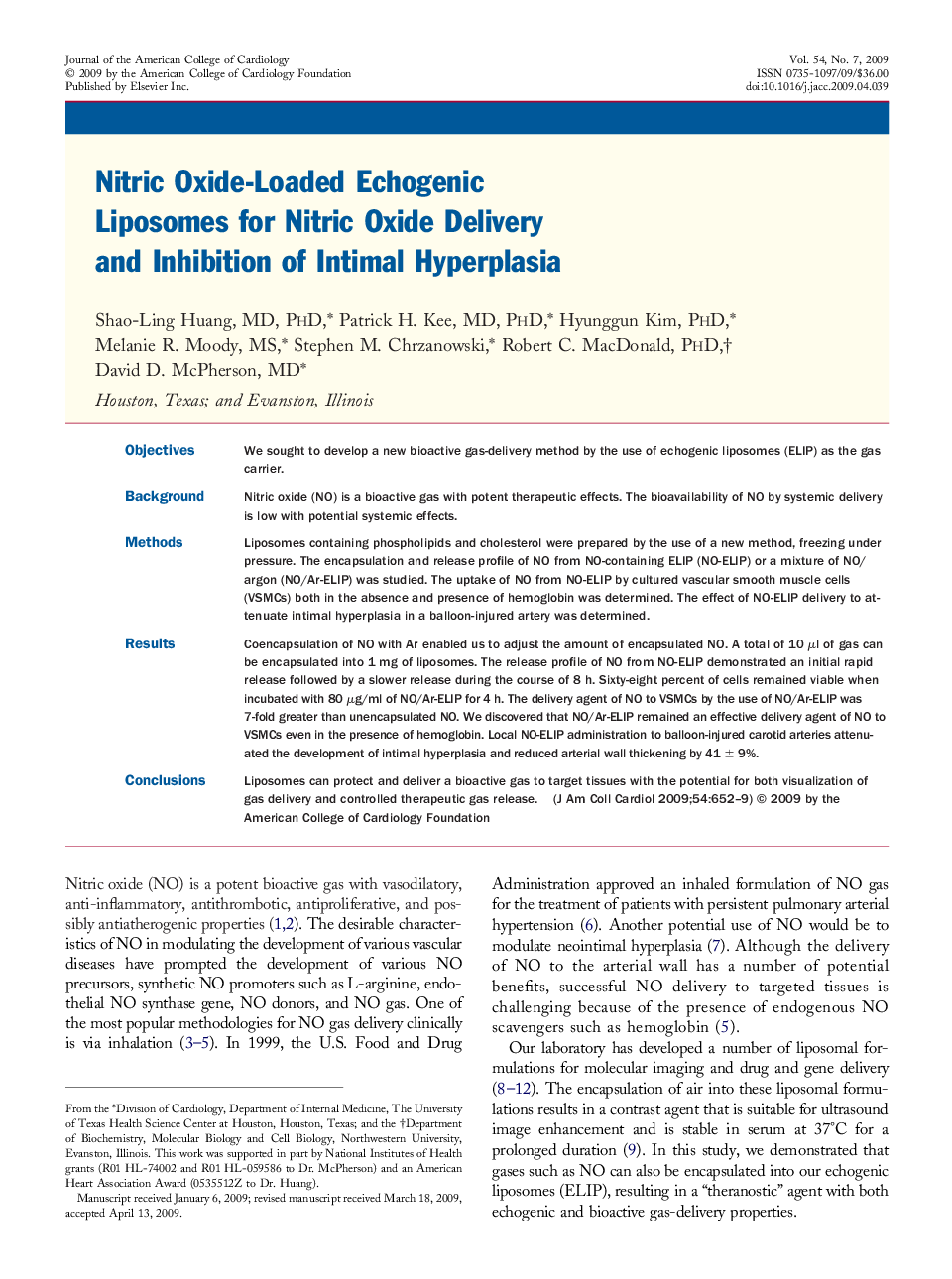| Article ID | Journal | Published Year | Pages | File Type |
|---|---|---|---|---|
| 2951886 | Journal of the American College of Cardiology | 2009 | 8 Pages |
ObjectivesWe sought to develop a new bioactive gas-delivery method by the use of echogenic liposomes (ELIP) as the gas carrier.BackgroundNitric oxide (NO) is a bioactive gas with potent therapeutic effects. The bioavailability of NO by systemic delivery is low with potential systemic effects.MethodsLiposomes containing phospholipids and cholesterol were prepared by the use of a new method, freezing under pressure. The encapsulation and release profile of NO from NO-containing ELIP (NO-ELIP) or a mixture of NO/argon (NO/Ar-ELIP) was studied. The uptake of NO from NO-ELIP by cultured vascular smooth muscle cells (VSMCs) both in the absence and presence of hemoglobin was determined. The effect of NO-ELIP delivery to attenuate intimal hyperplasia in a balloon-injured artery was determined.ResultsCoencapsulation of NO with Ar enabled us to adjust the amount of encapsulated NO. A total of 10 μl of gas can be encapsulated into 1 mg of liposomes. The release profile of NO from NO-ELIP demonstrated an initial rapid release followed by a slower release during the course of 8 h. Sixty-eight percent of cells remained viable when incubated with 80 μg/ml of NO/Ar-ELIP for 4 h. The delivery agent of NO to VSMCs by the use of NO/Ar-ELIP was 7-fold greater than unencapsulated NO. We discovered that NO/Ar-ELIP remained an effective delivery agent of NO to VSMCs even in the presence of hemoglobin. Local NO-ELIP administration to balloon-injured carotid arteries attenuated the development of intimal hyperplasia and reduced arterial wall thickening by 41 ± 9%.ConclusionsLiposomes can protect and deliver a bioactive gas to target tissues with the potential for both visualization of gas delivery and controlled therapeutic gas release.
